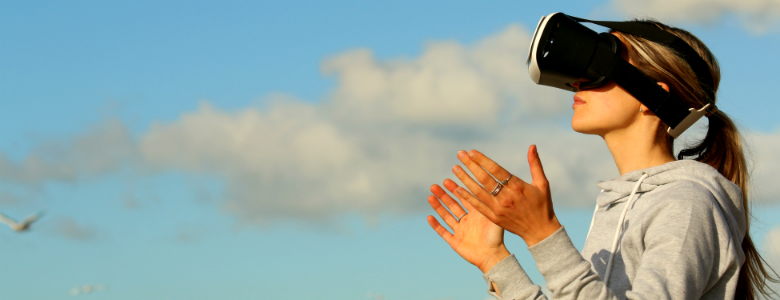5 things to know about AR and VR

Virtual reality (VR) and its increasingly popular cousin, augmented reality (AR), are two of the most popular tech trends today.
In fact, some lucky people can already experience the wonders of VR in their living rooms.
And not just the geeks.
Viewers wearing VR headsets found themselves 'surrounded' by wild elephants in a Tanzanian jungle thanks to US-based digital imaging company Immersive Media, which recently produced a live 360° VR stream for news show Good Morning America.
VR headsets like Google Cardboard and Oculus Rift are primarily used in, but not limited, to the entertainment and gaming industries.
The price tag of these headsets may still be quite high for the average consumer — the Rift costs US$599 (~S$861), for example — but Mr. Myles McGovern, President and CEO of Immersive Media, told Forbes that “as the technology progresses, it will come to a point where it’s so cost effective that it will reach mass acceptance”.
And AR made it to the mainstream thanks to the trend-setting Pokemon Go game, which added interactivity and virtual content to locations around us through our smartphones.
Here are five things about these two technologies to keep in mind.
AR should not be confused with VR
People tend to group AR with VR, when in effect they are vastly different, National University of Singapore Professor Andrew Nee, an expert in the use of AR and VR in manufacturing, tells TechNews.
While VR requires immersion in a virtual environment which cannot be interacted with, AR, on the other hand, overlays virtual, interactive 3D objects over the real world to create a sense that they're right in front of you.
“VR is the construction of an animated world, while AR is overlaying virtual objects on the real environment,” Professor Nee explains.
At its core, VR is not as high-tech as we think
Remember the beloved red View-Master toy that lets you ‘watch’ a 3D movie through still images found on reels?
First introduced at the 1939 New York World's Fair, the View-Master is a commercial stereoscope that is still available for sale today, seven decades later.
The nifty device displays two images that are taken spaced slightly apart so that the eye perceives depth, giving images a 3D appearance.
This is the underlying concept of VR devices.
Think of how the Google Cardboard platform works — it is fitted with lenses that turn the screens of compatible smartphones, with the right app running, into VR displays.
You have to see before you believe
When it comes to VR, the realism and level of immersion is something consumers simply have to experience to truly believe in.
No one can convince you until you put on a headset to 'see' for yourself.
“Many watch YouTube videos of VR experiences and think that the participants’ responses are exaggerated or fake. When they try it themselves on high-end headsets, like the HTC Vive, they are left flabbergasted,” shares Mr Irwin Luo Weijie, Chief Business Officer of Viziofly, a Singapore-based video production company that does 360° filming and models photo-realistic 3D environments for VR projects.
Luckily for AR content, they have the advantage of not being limited to head-mounted displays.
You don't need to be convinced that today's ubiquitous smartphones are well capable of handling AR applications, as millions of Pokémon Go ‘trainers’ will attest to.
VR goes beyond games
Contrary to what many people may believe, VR (and AR) technologies are not just for fun and games.
However, the roller coaster VR experience that has been played to death is actually hurting the perception of VR, says Mr Luo.
“While the roller coaster VR experience is an early and established adopter of the medium and created valuable awareness of VR technologies, there are other sustainable and impactful applications in areas like training and education,” he points out.
According to Mr Luo, workers can be trained in welding or handling high-risk equipment with the help of VR; it will not replace training with the real equipment, but it can help one build muscle memory and ingrain the process flow, he says.
AR for assistive or rehabilitative purposes
Similarly, people tend to associate AR with games, advertising and animation, but it can also be deployed in other useful real-life engineering applications to increase productivity and reduce learning curves, Professor Nee says.
The Augmented Reality & Assistive Technology Laboratory helmed by Prof Nee focuses on research into AR applications for both manufacturing processes and assistive technology, where it can be used to help dementia or stroke patients in their daily activities.
The lab has also developed an app that helps the elderly make calls to their children and friends just by scanning and recognising the photo of the person they wish to call.
“The platform we have developed uses ‘bare-hand’ to manipulate virtual objects instead of traditional devices such as a 3D mouse or pointer. This is the most natural way to interact with virtual and real objects,” he says.


